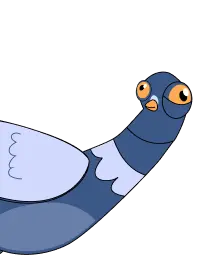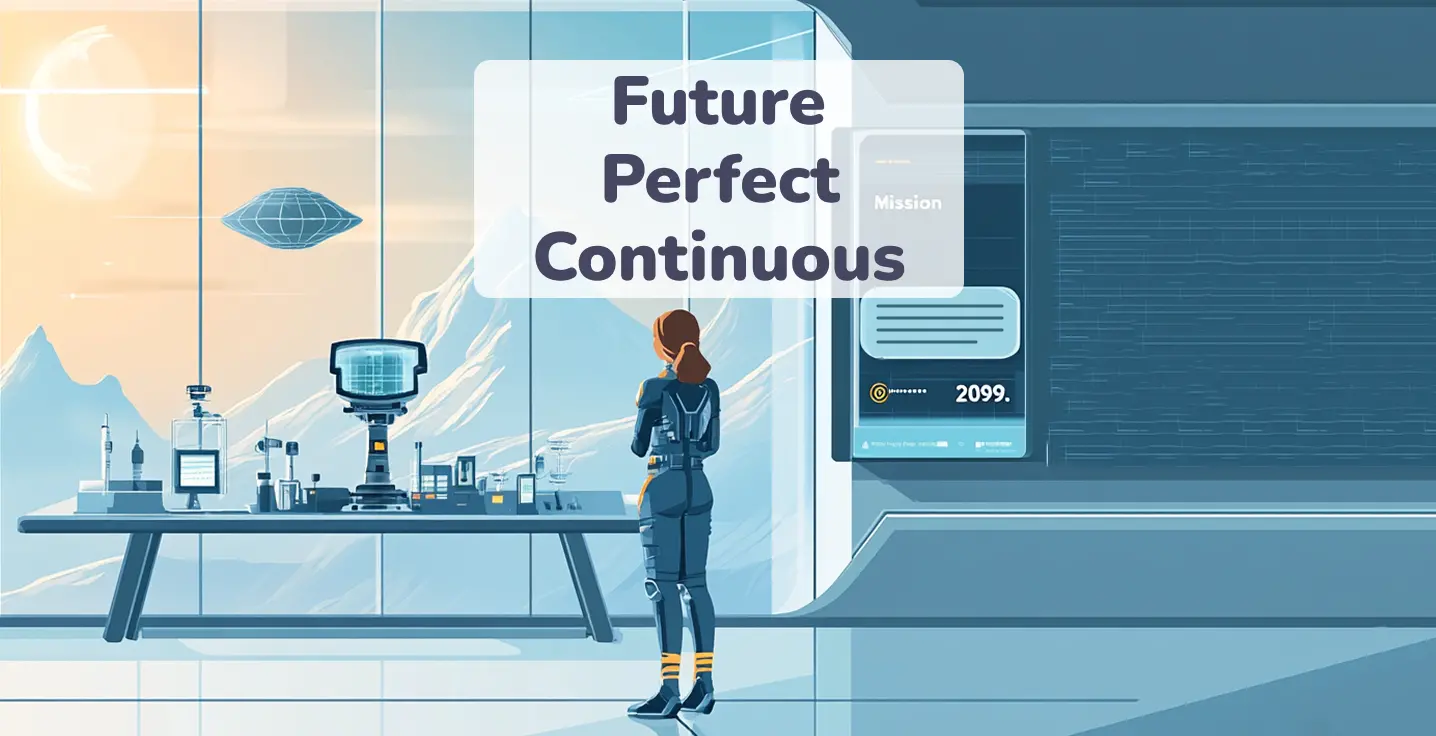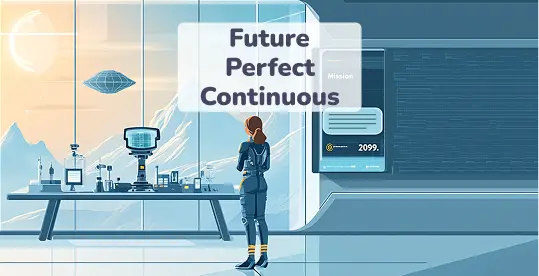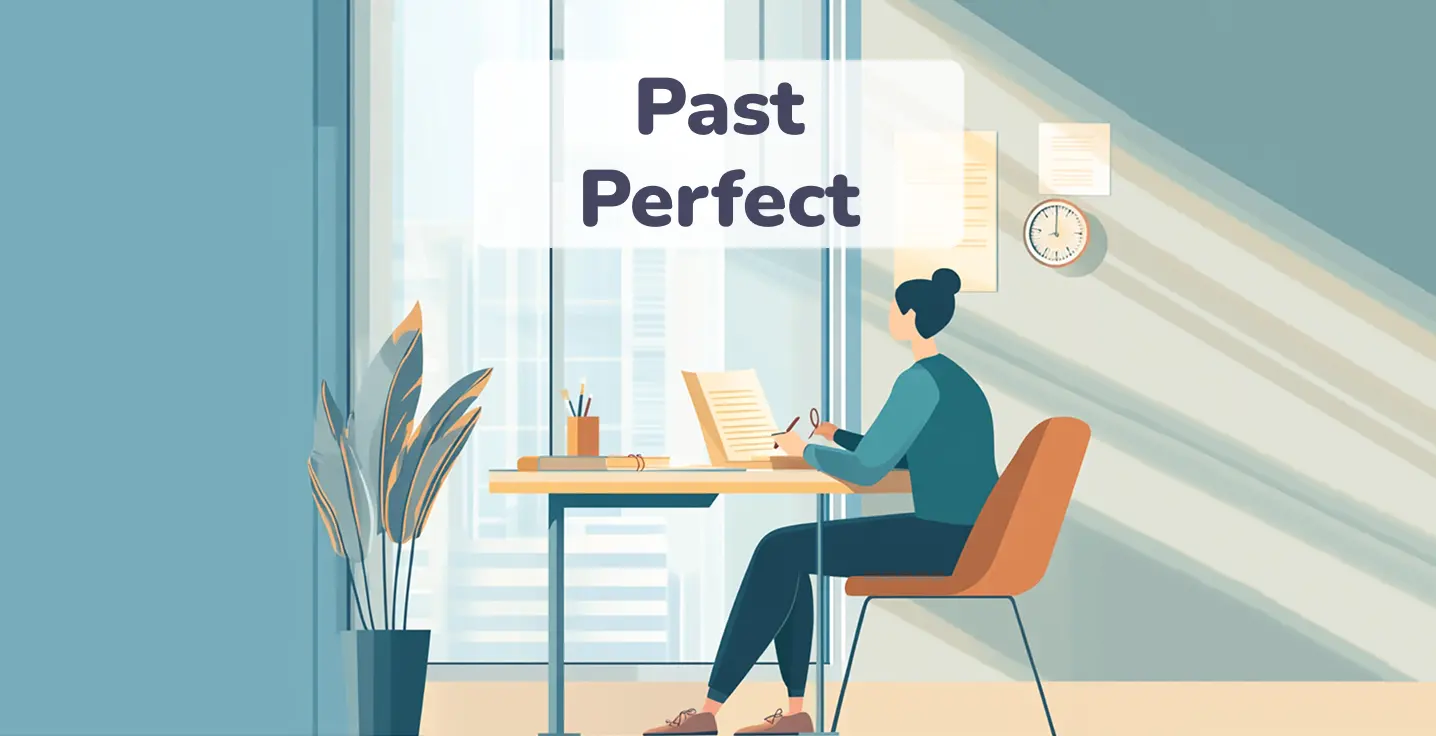What is the Future Perfect Continuous tense?
The Future Perfect Continuous tense definition may seem like a labyrinth to new learners, but let us put it simply: you can use this construction to speak or write about how long an action will be happening before a particular time in the future.
Sticking to real-life visuals is useful for speaking with advanced grammar, especially for IELTS and other exams, which also test your skills in forming sentences. Here’s the formula:
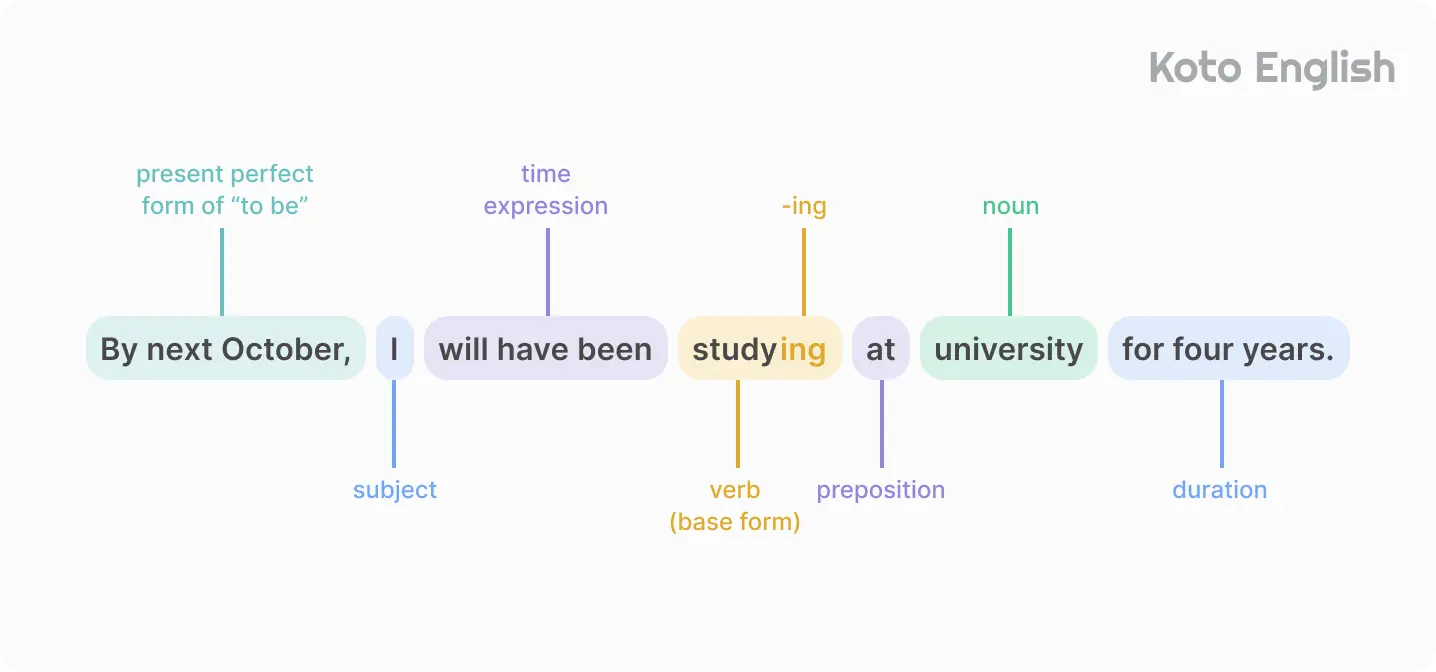
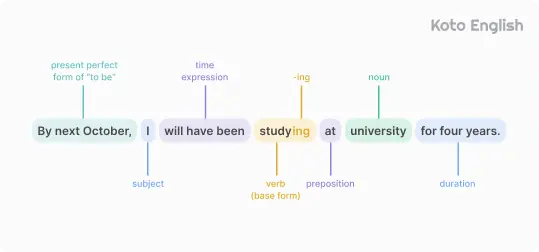
Let’s consider some Future Perfect Continuous tense examples:

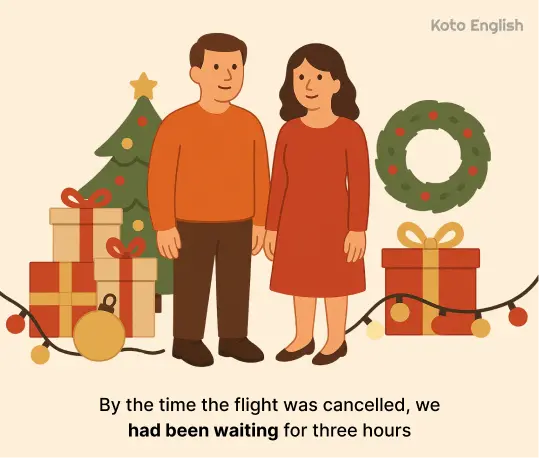
Level up your English with Koto!
Structure and form
The Future Perfect Continuous tense rules showcase how to write sentences using


For now, let’s check how the Future Perfect Continuous tense formula works with real-life examples with full and short or more conversational forms.
We have a list of sentences from real-life examples:
| Subject | Full form | Short form |
|---|---|---|
| I |
I
|
I
|
| You |
You
|
You’
|
| He/she/it |
She
|
She
|
| We |
We
|
We
|
| They |
They
|
They
|
| You (plural) |
You
|
You
|
When to use it in English?
As the Future Perfect Continuous tense definition stands for the way to describe when the action will be happening before some points in the future, we will consider daily usage with easy and understandable situations. You can find reliable information for other tenses in English grammar and recall your knowledge while learning how to implement Future Perfect Progressive.
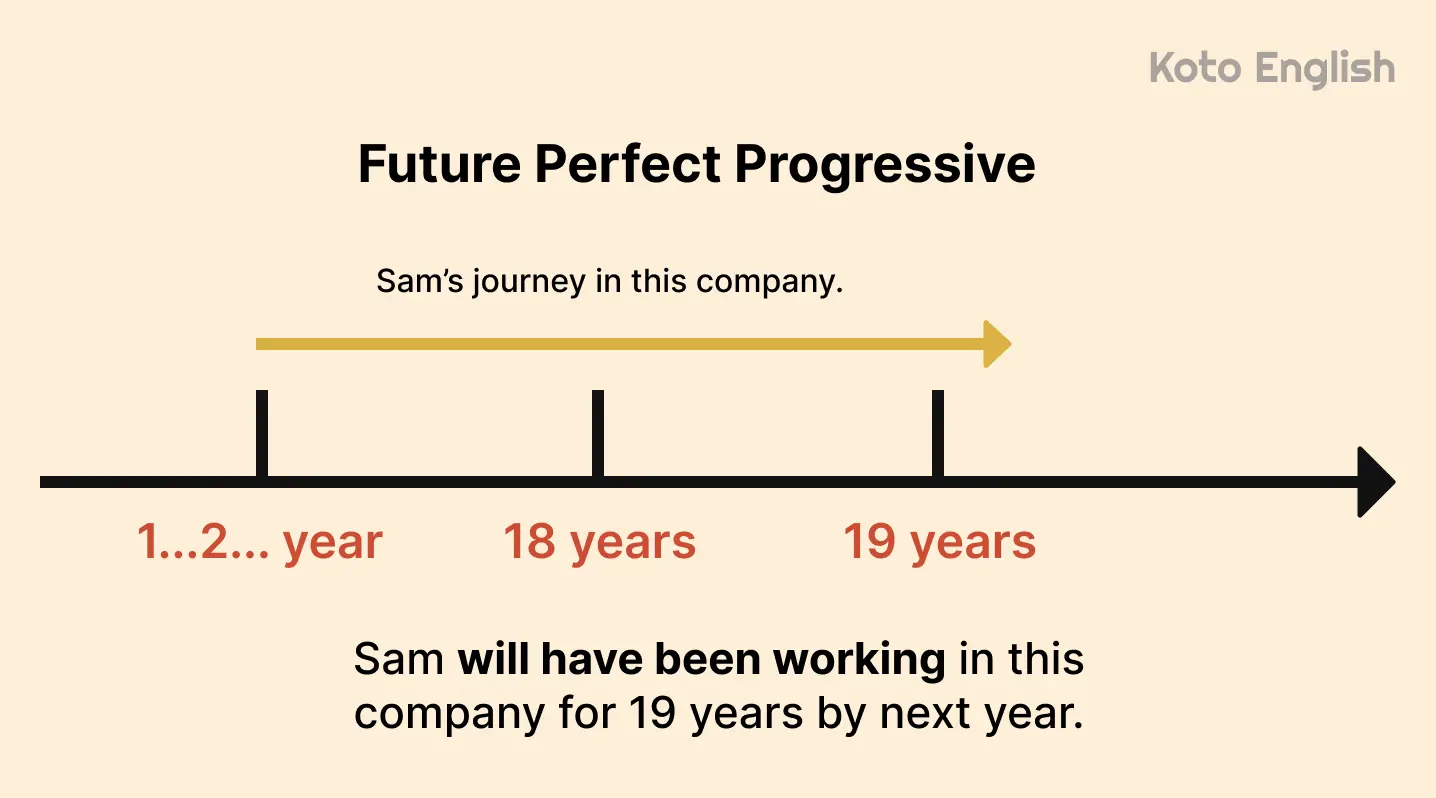
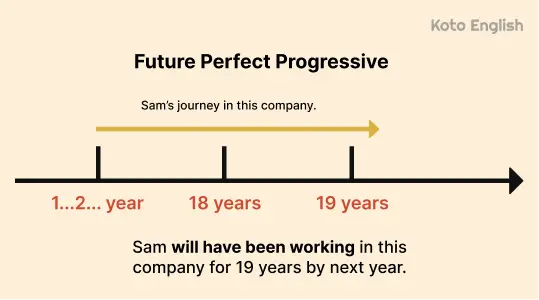
Overview Future Perfect Continuous examples for situations:
| Usage | Example |
|---|---|
| Showcase duration before points in the future |
Sam
|
| Reason behind a state or result in the future |
I will be exhausted because I
|
| Predictions about ongoing situations |
At 10 p.m., they
|
| Plans or expectations |
They
|
Examples of Future Perfect Continuous tense with time markers:
| Time indicators | Examples |
|---|---|
| by + specific time |
This book is hard. I
|
| for |
I
|
| by the time |
Children
|
| by the end of |
Our team
|
| before |
We
|
If you noticed there are phrases used for other tenses as well, you are right. They differ by context, as Future Perfect Continuous tense sentences indicate the duration of an action before something else happens in the future.
| Future Perfect Continuous Meaning | |
|---|---|
| Emphasize the duration before another event in the future | |
| for |
He
|
| by + future time |
|
| by the time |
|
| Cause of a future state/result | |
| because |
She will be tired
|
| since |
I will be sleepy
|
| Plans and intentions | |
| until |
I
|
| hopefully |
Hopefully, they
|
How to use this tense correctly?
We have discovered the structure for various sentences, but there are a plethora of cases when you need to ask questions or agree/disagree with some statements. Let’s find out how to do it.
Affirmative sentences
This type is the most common one, and you have already learned a lot of examples when defining what is the Future Perfect Continuous tense. The formula looks similar as well:
Subject + will + have + been + verb (-ing)
You will use it a lot when telling or writing stories, preparing for exams (especially for essays), or discussing some long-term work/school projects. Here are some examples:
| Full form | Short form |
|---|---|
|
She
|
She
|
|
He
|
He
|
|
They
|
They
|
Negative sentences
This part of our explanation will help you to tell that an action will not have been happening for a defined period of time up to some point in the future, and you can use will not have been with the -ing form of a verb and add some extra details if needed.


Here are some more examples to dive deeper into the topic:
| Full form | Short form |
|---|---|
|
They
|
They
|
|
I
|
I
|
|
She
|
She
|
|
They
|
They
|
|
He
|
He
|
|
By next term, my mother
|
By next term, my mother
|
Questions
Yes/No questions


You will learn it faster with a Future Perfect Continuous tense example that can be used in daily scenarios. Here’s a comprehensive overview of such sentences:
| Question | Answer |
|---|---|
|
|
Yes, I
|
|
|
Yes, she
|
|
|
No, I
|
Wh-questions


Learn how to form such questions with these examples:
| Question | Answer |
|---|---|
|
|
I
|
|
|
I
|
|
|
I
|
Enjoy personalized learning!
Common mistakes learners make
We make mistakes, and that’s OK, so let’s define them and learn how to prevent them instead of giving up on learning, deal? As it’s also an experience and way to study, here is an example of the Future Perfect Continuous tense that may confuse you.
Using the wrong tense
It’s so confusing when you have 12 tenses, but you still need to use them properly, and sometimes, future continuous seems to fit into the sentence when it doesn’t. Here’s how it goes:
|
By next week, I will be working here for five years.
|
By next week, I will have been working here for five years.
|
|
She will be living in Seoul for a decade next year.
|
She will have been living in Seoul for a decade next year.
|
|
He will be operating the task for three weeks at 4 a.m.
|
He will have been operating the task for three weeks at 4 a.m.
|
When the actions you talk about have been going on until a point in the future, it’s advisable to use the Future Perfect Progressive tense.
Putting the wrong auxiliary verbs
Mixing up have and has is not a new story, so you just need to remember that the structure for the Future Perfect Continuous is will have been doing.
|
He will has been doing a lot to stay healthy.
|
He will have been doing a lot to stay healthy.
|
|
She will has been waiting for this concert for 5 hours before we come.
|
She will have been waiting for this concert for 5 hours before we come.
|
|
He will has been swimming for 30 minutes before the corporate work starts.
|
He will have been swimming for 30 minutes before the corporate work starts.
|
Tips for mastering this tense
The English language is the queen of exceptions and complex grammar concepts, just like the structure of the Future Perfect Continuous tense you are mastering today. So, how to build fluency? Tips from native speakers and experienced learners will be your helping hand.
Tip 1. Visualize a lot
You can make a timeline for this tense, picturing that some action started in the past and see how it will be performing for some period of time and when it will be finished. The helpful moment here will be time expressions that you learn: by, by the time, for, since, and so on.
Tip 2. Visualize a lot
You are able to learn this complex grammar when talking about common things in your life, whether you are a student, a worker, or have any hobbies, a business that you run, and more.
Through the example of the Future Perfect Continuous tense that can be used, there is the study process (for English), your plans, job tasks, and more — literally anything that drives your passion and keeps your attention.
Tip 3. Practice a lot.
You will need to do various activities, for example, the ones you can find in this article and our exercises section, and when using our learning app. From negative and positive sentences to questions with various interrogative words — practice a lot when you have time, and make it your daily activity.
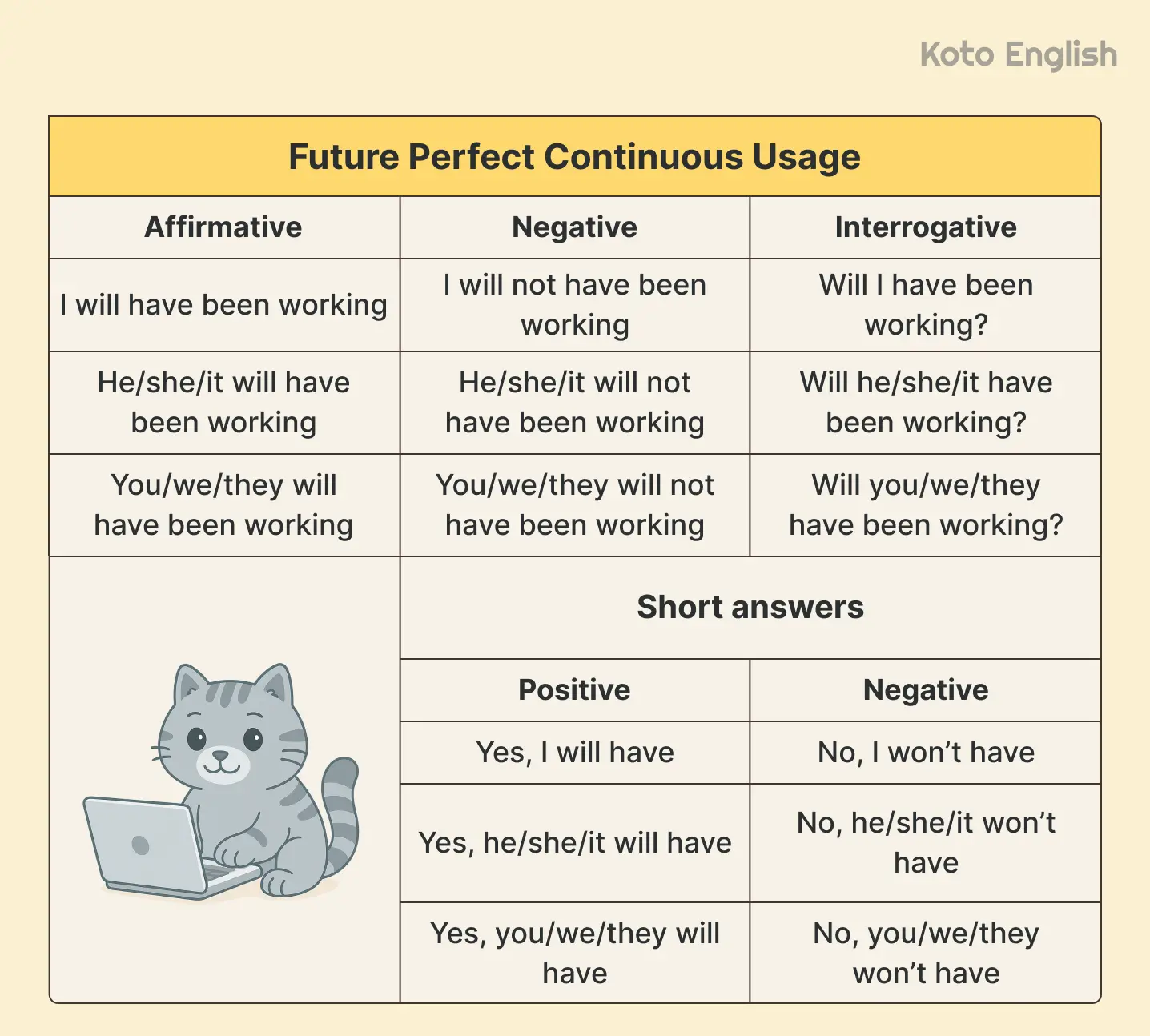
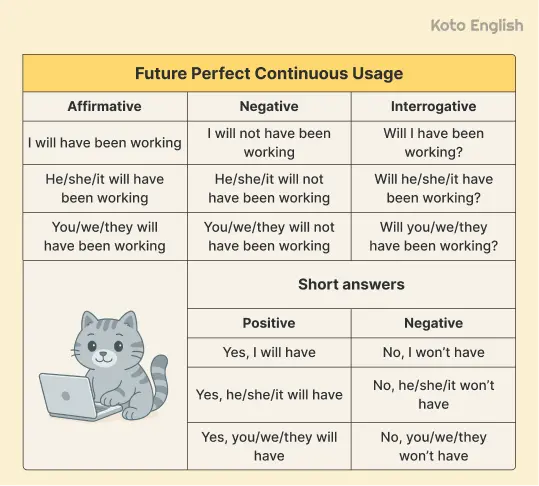
Tip 3. Add listening and reading activities.
If you are a fan of podcasts, historical, literature, cosmos or else, then you can listen to them and identify the Future Perfect Continuous tense structure and usage, especially if it is an academic-related topic.
You can also watch YouTube videos, shows on Netflix, or read articles and books that you find interesting — everything that will help you to have fun and learn simultaneously.
Following these tips, you will discover the nitty-gritty behind a complex grammar rule and become more fluent, which will allow you to move on, make your writing and speaking skills stronger, and open new opportunities for content consumption.
Summary
For now, you should be able to use the Future Perfect Continuous in various situations, expanding your vocabulary as well with real-life examples. Continue practicing with the exercises we’ve created for you, and become an expert in English.
Future Perfect Progressive FAQ
Remember that Future Perfect doesn’t have the sense of an action that keeps going; it describes the completion of something:
While Future Perfect Continuous has the duration in it:
Yes, we typically write them in the basic form. The number of such words is huge; you see them daily: believe, love, know.
|
I will have been knowing him for a decade next year.
|
I will have known him for a decade next year.
|
You need to memorize the ones that you will meet in daily conversations, for example, since, which is used commonly to show the duration. There is also by the + time when, end of the week, which expresses the end of an action.
It is also notable that for can be used for this tense as well, as well as all day/week/month and so on.
No, it is not that often used as Present Continuous, for example. The reason is that there are fewer moments when you need to use it; still, when it comes to academic writing, you will encounter this tense a lot.
According to the experience from native speakers, they don’t use Future Perfect Progressive for daily actions like having dinner, brushing teeth and others. Still, job-related situations may need this complex tense, especially if you are discussing terms for a project: I
